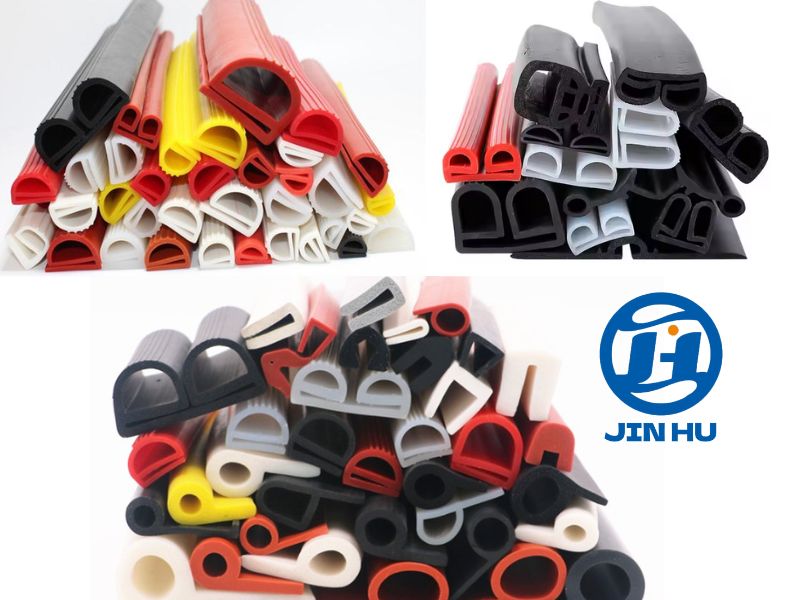
Cold storage facilities are critical for industries like food preservation, pharmaceuticals, and chemical storage, where temperature precision and efficiency are paramount. A key component ensuring the functionality of these storage systems is the cold storage door seal. This article explores the essential role, types, materials, and maintenance strategies for cold storage door seals, emphasizing their contribution to energy efficiency and operational reliability.
1. What Are Cold Storage Door Seals?
Cold storage door seals, also known as gaskets or perimeter seals, are flexible materials installed around cold storage doors to create an airtight barrier. Their primary purpose is to:
- Maintain Thermal Stability: Prevent temperature loss or gain by sealing gaps between the door and frame.
- Enhance Energy Efficiency: Reduce strain on refrigeration systems by minimizing heat transfer.
- Preserve Product Quality: Protect stored items from external contaminants like dust, pests, or moisture.
- Control Frost and Condensation: Eliminate unwanted condensation that can lead to ice buildup or damage.
2. Types of Cold Storage Door Seals
Cold storage door seals come in several designs, each suited to specific operational requirements:
-
Compression Seals
- Create a tight seal by compressing when the door is closed.
- Commonly used in walk-in freezers and refrigerators.
- Ideal for high-traffic areas due to durability.
-
Magnetic Seals
- Use magnetic attraction to form a consistent seal.
- Typically found in lightweight doors for smaller cold storage units.
-
Blade or Lip Seals
- Feature a flexible lip that presses against the frame for a barrier.
- Suitable for sliding doors or areas requiring frequent access.
-
Dual and Triple Seal Systems
- Incorporate multiple sealing layers to provide superior insulation.
- Essential for facilities with extreme temperature demands, such as blast freezers.
3. Materials Used in Cold Storage Door Seals
The choice of material for cold storage door seals significantly impacts their performance and longevity. Common materials include:
4. Benefits of High-Quality Cold Storage Door Seals
Using reliable door seals brings significant advantages to cold storage operations:
- Energy Savings: By preventing air leaks, seals reduce energy consumption, lowering operational costs.
- Product Safety: Maintain consistent temperatures, critical for preventing spoilage in perishable goods.
- Reduced Maintenance Costs: Proper sealing minimizes strain on refrigeration systems, reducing repair frequency.
- Improved Hygiene: Prevent external contamination from entering the storage environment.
5. Installation and Maintenance
Installation Best Practices:
- Ensure the seal is compatible with the door design and operating environment.
- Use precise measurements to avoid gaps or misalignments.
- Install using adhesives or mechanical fasteners as per the manufacturer’s guidelines.
Maintenance Tips:
- Regular Inspections: Check for cracks, tears, or signs of wear.
- Cleaning: Wipe seals with a mild detergent to remove dirt and prevent degradation.
- Replacement: Replace damaged or deformed seals immediately to maintain airtightness.
- Lubrication: For seals with moving components, use silicone-based lubricants to prevent cracking.
6. Innovations in Cold Storage Door Seals
The cold storage industry has seen advancements in door seal technologies, such as:
- Self-Healing Seals: Materials that can recover from minor punctures or deformities.
- Integrated Heating Systems: Seals with embedded heating elements to prevent frost accumulation in ultra-cold environments.
- Eco-Friendly Materials: Use of recyclable or biodegradable materials to align with sustainability goals.
7. Conclusion
Cold storage door seals are indispensable for maintaining the integrity of temperature-controlled environments. Their ability to ensure airtight sealing, energy efficiency, and hygiene significantly impacts the operational success of cold storage facilities. By understanding the types, materials, and maintenance practices, businesses can optimize their cold storage systems, ensuring long-term efficiency and reliability.
Investing in high-quality seals and staying updated with industry innovations can not only improve performance but also reduce costs and environmental impact in the long run.
If you need anything, please contact us,Customized different size/color/shape silicone rubber hose, making molds depending on your samples or drawings. FREE SAMPLES can be sent for your evaluation!
Over 20 years Professional Experience in Auto Accessories Field
https://www.jhsealstrip.com/
